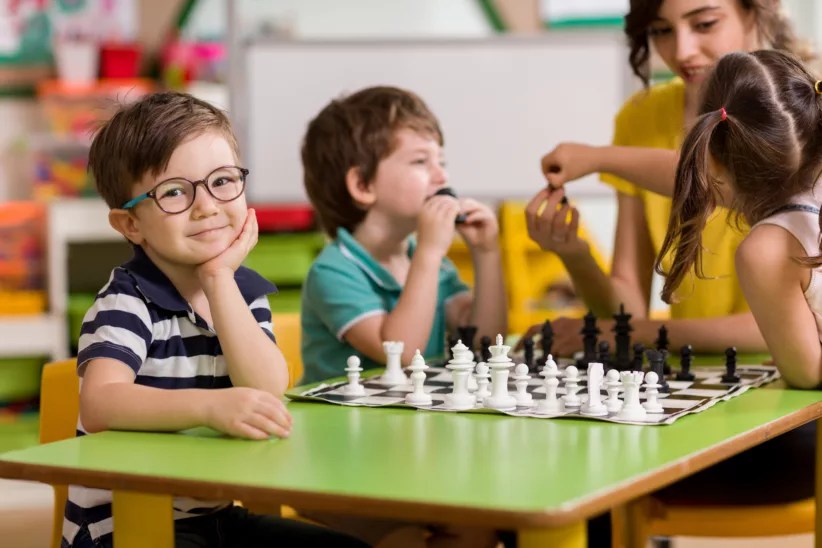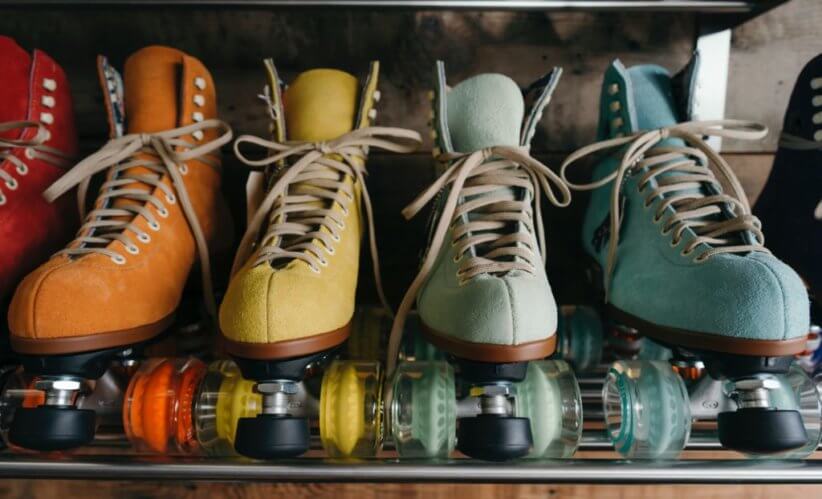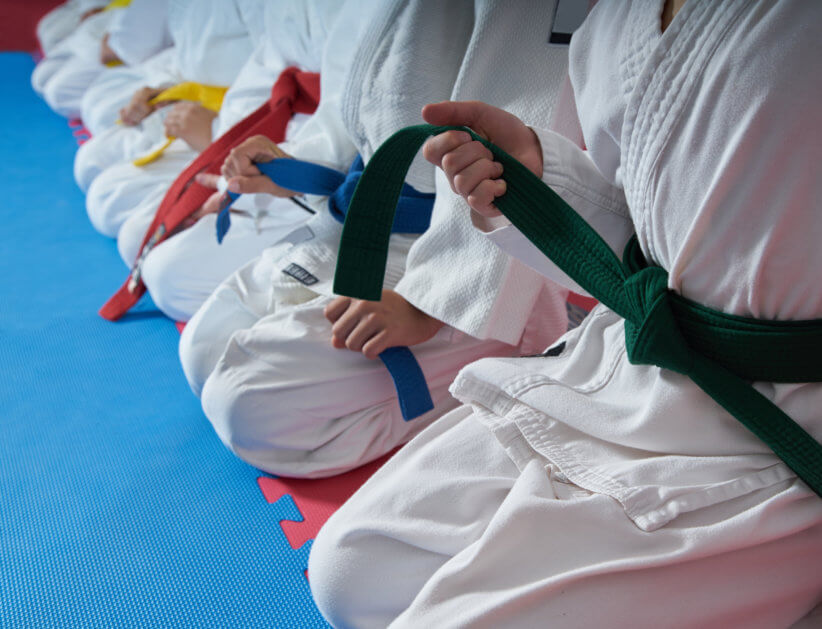
The summer is the perfect time for soaking up some sun and honing your outdoor sports skills while you’re at it. Swimming, golf, and tennis are all classic sports for the season, so we asked pro instructors and program directors around the city for their best tips for young beginners as well as older athletes. Here’s how to step it up in the pool, on the green, and on the courts.
SWIMMING
For younger beginners
“For young children, a game is a great way to work on swimming skills outside of lessons. Asking a child to retrieve a submerged toy from the bottom of the pool is not only fun, but it also allows the child to practice a surface dive and work on breath control and provides a great sense of accomplishment.” –Jennifer Lyons, associate aquatics director at Asphalt Green
“One of the best ways to help your child is to remove yourself from the pool area (or at least out of your child’s sight). This separation allows your child to relax and focus more on the lesson itself. Taking your child to the pool for play time and free swim will also help them become more comfortable in the pool and see how fun the water can be!” –Trevor Miele, director at NYU Swim Camp
“Educate your children to be safer around the water—a parent or other responsible adult should never be more than an arm’s reach from a child. Work with the beginners on breath control, blowing bubbles, reaching and grabbing, and gentle submersions. Introduce the back float with the child’s head on the parent’s shoulder, cheek to cheek. Finally, always seek a trusted swim school that focuses on fun and water safety.” –Jim Spiers, founder of SwimJim
“Children around the ages of 3 and 4 should swim with a focus on water exploration in order to build the basic skills and confidence to begin stroke development. The most important role for a parent at this stage would be to make your child feel at ease by demonstrating age-appropriate skills such as blowing bubbles, submersion, and gross motor movements (like kicking).” –Kevin Long, instructor at Physique Swimming
For older swimmers
“For parents with slightly older children, it’s still important to create a safe and comforting environment, but don’t be hesitant to encourage your child to swim independently. To capture a swimmer’s attention, I incorporate games into an instructional session to reinforce skill building.” –Kevin Long, instructor at Physique Swimming
“At the NYU Swim Camp, our campers have formal lessons, but there is also time reserved for free swim. This allows them to enjoy playtime in the pool and also gives them the opportunity to practice some of the skills learned during lessons. More time in the pool helps the swimmers become more confident and continue to develop their new sport.” –Trevor Miele, director at NYU Swim Camp
“Swimming lessons do not stop when the child exits the pool! They can practice blowing bubbles and singing songs underwater in the bathtub at home. Your child can work on their freestyle technique while watching TV. Every moment is an opportunity to learn. Remember: A child who blows bubbles today is the one swimming butterfly tomorrow!” –Lane Wineski, director of 92Y’s Aquatics Program
“It’s never too late to put your child in swimming lessons. Look for classes that are small and have passionate, fun instructors. Let your child know that they can learn how to swim no matter what. The two most important skills they must learn are how to float on their back and stomach before any stroke. The right company, instructors, and encouragement will make a world of difference for any swimmer, young or old.” –Agnes Davis, CEO and president of Swim Swim Swim I Say
GOLF
For younger beginners

“The best advice is to be focused on fun and not form. Keep activities safe, simple, and successful! Use colored balls and targets with the right mixture of modified equipment. Be sure to include lots of play and fantasy. If it’s princesses your little one is into, try ‘putting the jewels back into the jewelry box;’ if it’s transportation, try ‘putting the wheels back on to the monster truck.’” –Kate Tempesta, founder of Kate Tempesta’s Urban Golf Academy
“3- or 4-year-olds don’t always have the strength yet to make a full swing, so stick mainly to putting and chipping. It’s [also] helpful to start with plastic training clubs.” –Tim Townsend, senior teaching pro at Chelsea Piers Golf Club
“For pee wees learning to play golf, starting them on the putting green is a great way to get them engaged, from short putts that require precise alignment and center-ness of hits to longer putts that require control of the length of the stroke. There are always fun games to play on the putting green to help see the line of each putt.” –Mitchell Spearman, founder of Mitchell Spearman Junior Golf Academy
For older golfers
“The challenge of teaching juniors ages 5-9 is cultivating their skills while preserving the joy of the game. Keep instruction simple and fun and communicate on their level by kneeling down, not standing over them. Many children in their early years have active feet during the swing. Give them a set of ‘magic shoes’ to quiet their feet. Magic shoes which can be built by standing on two hardcover books, and one magic shoe can be built out of golf balls around their lead foot.” –Kate Tempesta, founder of Kate Tempesta’s Urban Golf Academy
“When they advance, make sure they use small, light clubs (US Kids brand is great). Keep the sessions brief so they don’t lose interest. Make it fun—let them steer the cart if you’re playing golf and let them hit old balls into the water. When they’re 5, take them to the course in the evening and let them play a few holes. Lastly, don’t badger the kids. Teach them a little at a time. If it’s not fun, they won’t play!” –Tim Townsend, senior teaching pro at Chelsea Piers Golf Club
“The first thing any young golfer needs to learn is the importance of finishing their swing in balance, which will aid them in hitting the ball further. This allows them to end the swing with their weight on the front foot, which promotes a good swing path and acceleration. To eliminate trying to lift the ball in the air, have your junior hold their finish for a count of three.” –Mitchell Spearman, founder of Mitchell Spearman Junior Golf Academy
TENNIS
For younger beginners

“As much as we love to hear that more and more young children are getting involved in our sport, I do feel obligated to warn parents not to put their child on the ball machine three hours a day to produce the next Roger Federer or Serena Williams. At an early age, the key is to make any activity fun. It’s far more important at this age to develop balance, agility, and coordination than the specific skills.” –Lawrence Kleger, director at John McEnroe Tennis Academy (Sportime NY)
“At this stage, the children should be developing hand-eye coordination and learning to move in different directions. Using the correct equipment for the children is helpful—small-size racquets, specially designed balls, balloons, lower nets, and other items that give the children an opportunity to succeed.” –Jordan Snider, director of Future Stars Summer Camps
“The best way to build basic hand-eye coordination is by tossing the ball underhand to your child and having them catch after one or two bounces. As the child progresses, the parent can begin tossing the ball away from the child to force the child to move their feet to catch the ball. Finally, progress to tossing and catching the ball in the air without letting it bounce.” –Gabriel Slotnick, tennis professional at Advantage Tennis Clubs
“Young children learning tennis for the first time must be introduced to the appropriate equipment. Nowadays, there are tennis rackets and tennis balls made specifically for children. A larger, decompressed ball is initially easier for the child to hit—generally, the younger the child, the bigger the ball. Finally, tennis nets and the tennis court playing area [also can be] shrunk and customized.” –Neil Friedman, founder of NFCH Sports
“For the 3- to 4-year-olds, it’s all about hand-eye coordination and simple muscle memory. A simple drill is to have them push the tennis ball with their racquet like a hockey puck. This will help them adapt their tracking skills.” –Reza Thompsett, director of tennis at Southampton Racquet Club & Camp
“Simple exercises on or off the court: 1) Bounce a ball to a child and have them try to catch it with one hand or both hands. 2) Have the child balance a ball on the racquet for as long as they can. 3) Have them walk while balancing the ball on the racquet from one point to another.” –Lisa M. Jones, head pro tennis director at East Hampton Indoor Tennis
For older tennis players
“For children ages 5 and older who have begun to play tennis, they can practice their forehand and backhand shots by having a rally with themselves. By standing in one spot and tapping the ball up with their racquet, alternating with their palm up and knuckles up, children will learn racquet and ball control and a sense of how the ball feels when it comes in contact with their racquet.” –Gabriel Slotnick, tennis professional at Advantage Tennis Clubs
“Kids should still be developing their basic athletic skills in a fun, challenging, and fulfilling atmosphere. As they get older and more accomplished in the specific athletic and technical skills needed for tennis, I would recommend parents find a junior academy or program that has a proven track record of producing high-level junior players. If an academy is churning out many top national juniors, chances are they know how to do it!” –Lawrence Kleger, director at John McEnroe Tennis Academy (Sportime NY)
“Once the child is introduced to his tennis racket, balls, net, and court space, children can be asked to do self-testing challenges that proceed in a logical progression. One of the first tasks we may ask young children to do is to hold the tennis racket with one hand so that the strings are facing upward and, with the other hand, hold the ball on the strings. Then, we ask that they balance the ball on the strings of the racket. Finally, they can try walking at the same time while balancing the ball on the strings of the racket.” –Neil Friedman, founder of NFCH Sports
“For the 5-year-olds, the biggest success is making contact on that first bounce. Start with dropping the ball by their side and swinging from low to high. As they get better, move to the other side of the net. The key is to keep it fun and entertaining so that juniors learn the game and play for life.” –Reza Thompsett, director of tennis at Southampton Racquet Club & Camp
“Technique becomes a greater factor, but it’s vital to remember that children at these ages cannot manipulate their bodies the way adults or older children can and therefore are not ready for technical analysis. These children are often still learning their left from their right. Activities that include throwing, catching, and running are all good building blocks for tennis.” –Jordan Snider, director of Future Stars Summer Camps
“Exercises for children with some experience: 1) While standing still, try to bounce the ball up and down with the racquet repeatedly. 2) When hitting the forehand or backhand, the most important thing is to turn to the side and get their racquet back. 3) For the follow through, finish the forehand or backhand stroke with the tennis racquet high and in front of them.” –Lisa M. Jones, head pro tennis director at East Hampton Indoor Tennis




















